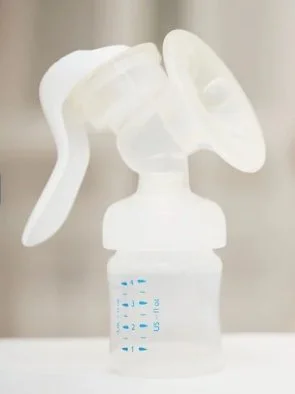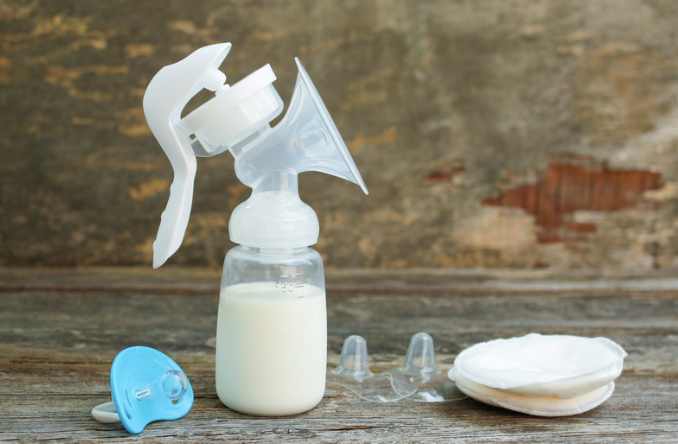How Important is Flange Size?
Whether you are a parent who is exclusively pumping, building a freezer stash, or pumping for when you are away from your baby, the size of your flange can make a huge impact on comfort and milk output. This critical part of your breast pump setup contributes significantly to your milk output, comfort, and even breast health.
Therefore the correct size isn't optional—it’s essential.
What exactly is a flange?
The flange is the funnel-shaped piece that fits over your nipple and areola. It creates a seal around the breast so the pump can use suction to extract milk from your breast. Flanges come in various sizes and some different shapes, and they are measured in millimeters based on the diameter of your nipple.
What are signs you are using the wrong flange size?
If you’re using the wrong flange size, you may experience any of several different symptoms. Many breastfeeding parents find that they have nipple problems such as pain, chafing, redness, or swollen nipples after pumping. They may also experience low milk output, poor breast emptying, clogged ducts, or mastitis. Even a fit difference of 2-3 millimeters can lead to long-term discomfort and reduced milk supply.
Why does the right fit matter?
1. Comfort
The right flange size allows your nipple to move freely in the flange tunnel without sucking in too much of your areola, which would cause pain or swelling. This also keeps your nipple from being compressed too much and keeps the sides of your nipples from rubbing against the tunnel. This reduces irritation and helps make pumping a less painful experience.
2. Efficiency
When your flange fits properly, the milk ducts are compressed in the proper location and are not pinched or constricted. That means milk flows more freely, and you’re likely to express more milk in less time.
3. Breast Health
Incorrect flange sizing can cause clogged milk ducts, which can lead to painful engorgement or even mastitis—a breast infection that may require antibiotics and can cause significant disruption to breastfeeding and even lead to early weaning.
How to measure for your flanges
Measure your nipple diameter (in millimeters) before feeding your baby or pumping.
Try the flange size that is equal to your nipple size or one size larger to start.
Use this number as a starting point to find your flange size. Some people may need to increase flange size by 1-3 millimeters depending on how stretchy their nipples are during pumping.
Observe how much milk you are able to pump within a 15-20 minute pump session. The best size for you is the one that is the most comfortable and gets the most milk out with greatest efficiency.
For example, if your nipple is 18mm in diameter, a flange size between 18-21mm may work best.
Re-Evaluate Often
Your breasts change during your breastfeeding journey—especially during the postpartum period. What worked at one stage might not work later. Reassess your flange fit if you notice any discomfort or a drop in output.
Custom Flanges & Inserts
If standard sizes don’t work for you, many brands offer custom sizes and silicone inserts that adapt the flange size for a better fit. Don’t be afraid to try different sizes or styles, but when in doubt—consult with a lactation consultant for guidance.
Tools & Resources
Lactation consultants (IBCLCs) are trained to help with flange sizing.
Online nipple rulers and printable measuring tools can help you get started at home.
Some suppliers now offer flange fitting kits with multiple sizes for trial and error.
Final Thoughts
Using the correct flange size isn’t a luxury—it’s a necessary component of your breastfeeding toolkit. A comfortable, efficient pump session can boost your supply, protect your breast health, and make your pumping journey more sustainable. Don't settle for less than the best and most comfortable. Your breast will thank you—and your baby will be a happy, well-fed baby who thanks you too!
Have questions or need help to fine tune your flange fitting? Connect with me to schedule an appointment and find your best pumping life.
Wolf Lactation, LLC, founded by Jennifer Wolf, DNP, MSN, RN, IBCLC, CBE, offers compassionate, evidence-based support for families throughout their feeding journey. Jennifer provides prenatal education and breastfeeding consultations, both virtually and through home visits, with services that include guidance on bottle feeding and pumping. Her care is personalized, approachable, and grounded in clinical expertise. With a warm, supportive approach, Jennifer helps families feel confident and informed as they navigate the early stages of parenthood.



